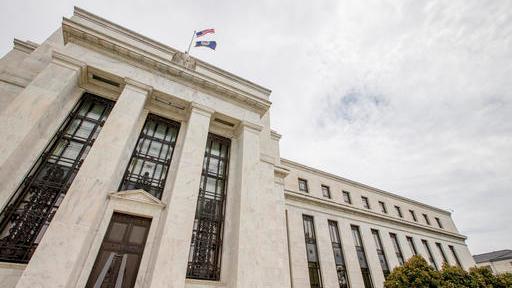Fed to give banks a break on stress tests
The Federal Reserve is proposing a number of changes to simplify and ease the annual stress testing exercises for the nation’s largest banks required by JPMorgan, Wells Fargo and others.
In a speech Friday, Fed Vice Chairman for supervision, Randall Quarles, says the central bank wants to make changes to the annual stress tests mandated by post-crisis financial reform law Dodd Frank that would better tailor tests and improve measuring risk banks take. It would also make the tests less of guessing game and regulatory headache for banks.

Quarles says adjustments are intended to increase both the transparency and the efficiency of stress testing. “The changes…are not intended to alter materially the overall level of capital in the system or the stringency of the regime,” said Quarles.
| Ticker | Security | Last | Change | Change % |
|---|---|---|---|---|
| JPM | JPMORGAN CHASE & CO. | 329.17 | +3.24 | +0.99% |
| WFC | WELLS FARGO & CO. | 95.30 | +0.83 | +0.88% |
| C | CITIGROUP INC. | 120.38 | -1.18 | -0.97% |
| BAC | BANK OF AMERICA CORP. | 55.27 | +1.01 | +1.86% |
He also suggests that as banks become more resilient they may not need to raise more capital to guard against risk taking but rather maintain current levels.
Among the proposed changes:
- The Fed wants to essentially tell banks how much of a capital buffer they will need to raise for that year’s stress test so banks know how much capital they can safely set aside for dividends and share buybacks. Banks have complained that not knowing how much capital they have to raise based on that year’s stress tests makes it hard to determine the level of capital to give back and therefore pass the test.
- Banks are required to have minimum capital requirement and a buffer on top of those requirements that serve as a warning sign to regulators and banks to reduce buybacks and dividends when the buffer approaches the minimum requirement. Right now, banks are subject to maintaining a fixed buffer of 2.5 percent of assets weighted by risk. The Fed is looking to replace the fixed bugger with one that is tailored to the bank based on the result of the stress test.
- Provide banks with more details on the stress test scenarios and remove the qualitative portion of the stress test as a way to publicly object to firms passing or failing the stress tests.
- Other proposals under consideration: looking at different ways to measure banks risk taking on trades
To critics who say the Fed is giving away questions to the exam and the ability of firms to game the system, Quarles says he’s “skeptical.” The Fed official tried to make the case that keeping the test opaque doesn’t necessarily guard against catching the banks off guard because he says each year that the Fed conducts the stress tests banks learn more about the Fed’s methods and try to reverse engineer and figure out what the Fed is thinking.
“I don’t view the regulatory proposals we put forth as a relaxation,” said Quarles. “I think we’re recalibrating in light of experience the post crisis regulatory regime to achieve same objectives. We don’t object to more capital and more liquidity to have a safer and sounder system. We need to also improve efficiency and support for real economy. When looked at fairly what we’re doing is justified recalibration.”
Banks are currently subject to 24 separate capital requirements and the Fed is proposing simplifying and reduce the number to 12.
The Fed’s stress tests were mandated annually by law after the financial crisis initially for banks with assets of $50 billion or more. They examine how the banks would perform during a hypothetical severe recession to prevent bank failures in a crisis. Earlier this year, Congress passed a new law that raised the level of the size of a bank that would be subject to the annual stress test to $100 billion.
Over a week ago, the Fed proposed that banks with assets between $100 and $250 billion would only be subject to stress tests every other year. Quarles hopes 2019 would be the first off year that the smaller of the large banks would not be subject to the stress test, with the analysis resuming in 2020.
The suggested changes to the stress tests come after the Fed proposed tailoring rules that govern U.S. banks to make the rules proportionate to the amount of risk taken by large banks. The move may level the playing field for regional banks by creating a new set of criteria to decide which large banks are subject to the toughest regulations.
Separately on Friday, the Fed launched an inaugural report on the strength of the financial system, how well banks are capitalized and changes in the regulatory structure used to supervise banks. The report finds U.S. banks are significantly more flush with capital to guard against an economic downturn. The Fed says the strong economy has helped further improve banks’ financial strength, loan growth remains strong and loans borrowers have defaulted on are near a ten-year low. Quarles says the Fed does not see any signs flashing red now on the health of the financial system.
Quarles will testify before Congress next week on this report and the Fed’s new regulatory proposals in what will become regular semi-annual testimony.




















